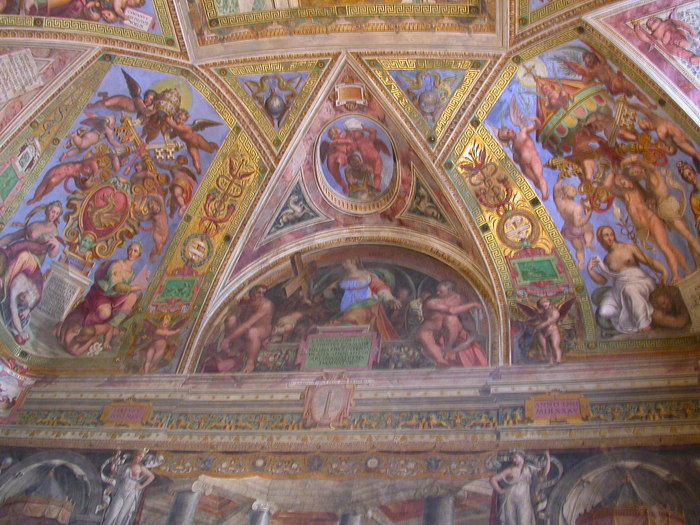
From the very tiny, back to the very grand. The immense celings are all painted in grandiose fashion. This piece is particularly interesting for its nod to Mary-worship: a controversial subject within the Catholic church.

From the very tiny, back to the very grand. The immense celings are all painted in grandiose fashion. This piece is particularly interesting for its nod to Mary-worship: a controversial subject within the Catholic church.
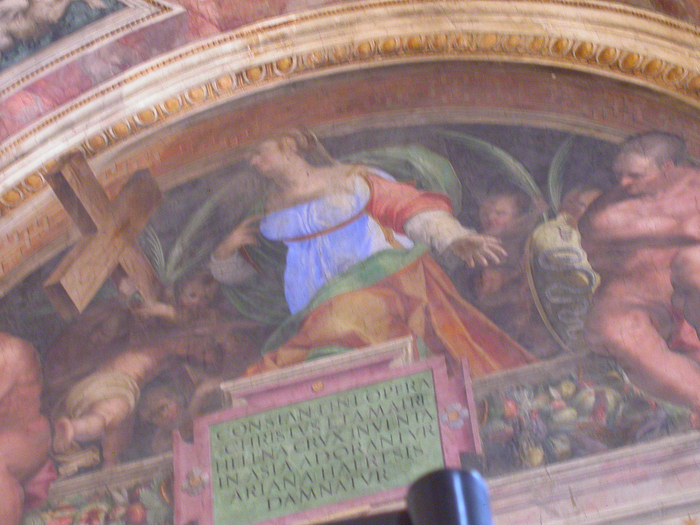
Catholocism replaced goddess-worship in many lands. Particularly in these areas, the people naturally felt more comfortable praying to Mary, who more closely resembled the Mother-Godess figures they had been forced to give up. This trend continues today in countries like Mexico, where shrines to Mary are more common than shrines to anyone else, including God or Jesus. There is a fair amount of grumbling within the Catholic church about this problem,
but clearly it wasn't such a big deal 500 years ago.
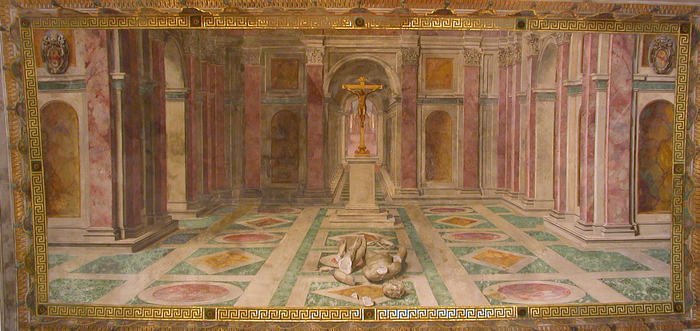
This piece dominates the celing in the room just before the real masterworks begin. It is easily my favorite painting in the Vatican, and it is somewhat remarkable that it remains there. A golden cross is the center of the piece, having clearly pushed out of the way and shattered an exquisite marble Roman statue. The room is paved in marble stolen from the Roman temples and Forums. Niches in the walls stand empty, as they undoubtably did in the artist's time, but niches like these once contained more magnificent marble statues. Perhaps the Vatican saw it as symbolic of Christianity's victory over the pagan religions, but I think that the artist appreciated that much of the beauty of Roman civilization had also been destroyed in the process.
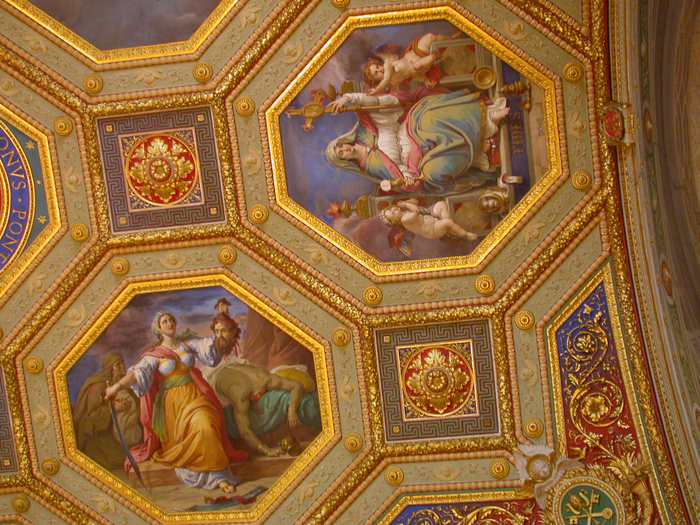
The color in the place is almost overwhelming. Some of the subject matter is a bit on the creepy side, too.
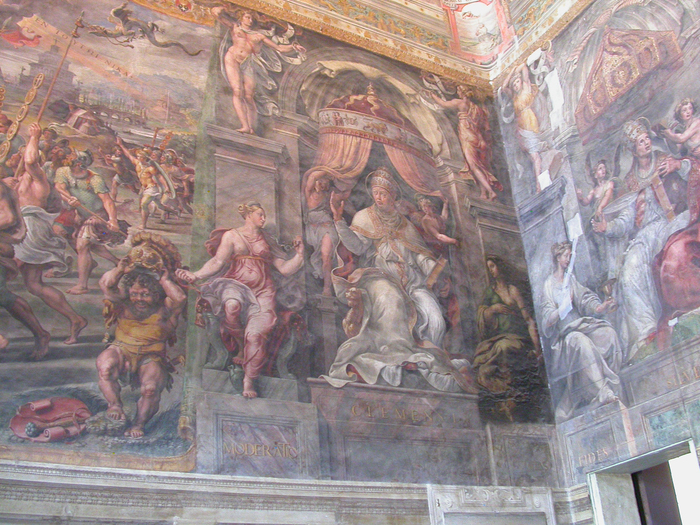
This piece raises a lot of questions, too. The troops are carrying a dragon standard, flying in the upper left of the picture. What is the signifcance of the grotesque dwarf figure in the lower left? Did you notice that all the women surrounding the Pope or Cardinal or whatever he is are bare-breasted? Bare-breasted women and nudes in general were not uncommon in art of that time (think of Michaelangelo's David), but the Vatican was generally more prudish about covering up things than most of its contemporaries.